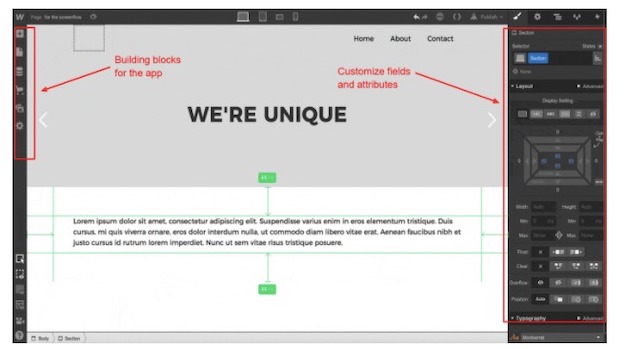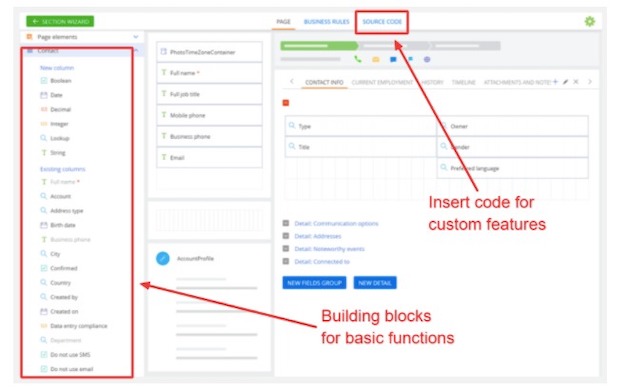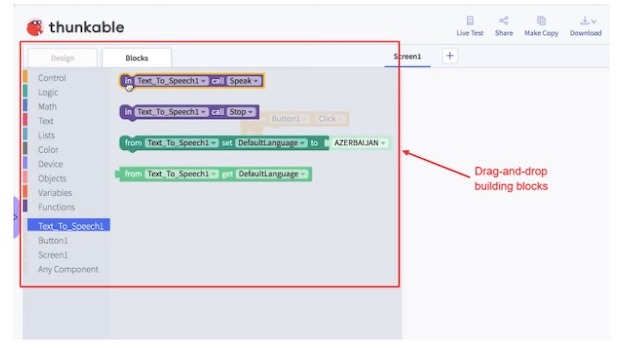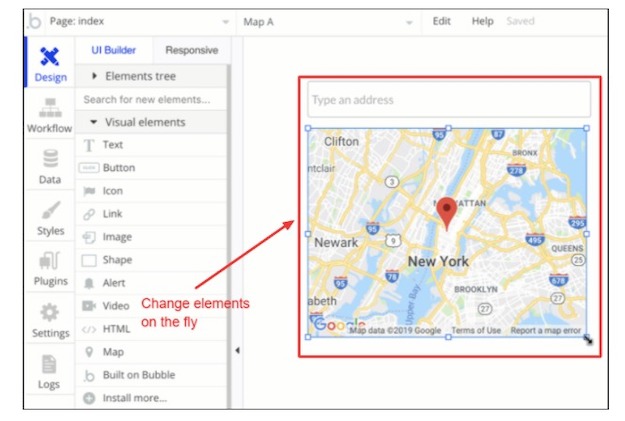There is a rapidly increasing demand for software in the last decade as business processes become more complex. As competition intensifies in most, if not all, industries, business leaders are looking at applications to streamline their operations and reduce costs, effort, and time. Consequently, the need for software significantly exceeds the supply of coders. Organizations are taking software development into their own hands to create tailor-fit solutions. But, how do you create custom apps without the additional expenses and extensive programming skills? No code platforms are the answer to these modern demands.
What is No Code?
A no code development platform is a type of application for building software and applications without coding.
It is now becoming a promising and popular substitute to traditional software development processes, especially for non-technical industries.
No code is an attractive solution to businesses with a limited budget but needs full-fledged solutions in their operations.

For instance, MSP digital marketing firms often require apps, such as powerful Content Management Software (CMS) to streamline their campaigns across different channels.
Developing a solution for their specific needs is expensive and time-consuming. No code provides an alternative way to create bespoke programs without spending so much time and money on development.
Chris Wanstrath, the co-founder and former CEO of Github, once said, “The future of coding is no coding at all.”
And it seems that he is right. Various industries have been plagued by the lack of developers in the previous decades.
As the need for more customized solutions rapidly grows, no code became the answer to businesses’ demand.
Experts predict that the no code platform market will grow up to $21.2 billion by 2022. Recently, Google acquired AppSheet, a popular no code platform.
This move from a tech giant legitimizes no code as a mainstream software development solution.
Additionally, it puts coding power into the hands of businesses and individuals outside the technology industry.
Because they understand their operations better, they can create innovative solutions that perfectly address their needs.
For example, human resources managers or recruitment specialists can create an applicant tracking system that caters to their specific processes.
Industry-specific workflows that only these professionals fully understand are now translated into software solutions.
Furthermore, no code allows small and medium-sized businesses to harness the power of customized applications to boost their business growth.
What Are The Differences Between No Code and Low Code?
If you have heard of no code, then you might possibly come across another term: “low code.”
A common misconception is that these two terms are similar and interchangeable. But, they are not.
No code was created for businesses without technical know-how. It focuses on “what” an application does, not “how” those functions are executed.
The app developer tells the system what it wants the app to do, and the no code platform does the rest.
Low code is also for individuals with no programming skills. However, customizing solutions will require a developer at some point.
In low code platforms, most basic building blocks have pre-built functionalities, so non-coders can create apps. Just like no code, the app creator tells the system what it wants the app to do.

However, a developer will need to step in at some point to create advanced functionalities.
The programmer writes instructions in the form of a programming language. He/she tells the system how to execute a function.
How Does No Code Work?
If you are new to no code, you will be wondering how it works without any coding. Is it really possible to build applications without programming?
Technically, when developing software using no code platforms, you are still using code to create solutions. You simply don’t need to touch any line of code.
These platforms come with pre-built elements that serve as building blocks to create more complex features when making robust product management tools, for instance.
On its interface, you typically have access to drag-and-drop functionality (or something similar) where you combine, reuse, and scale these building blocks.
It replaces writing programs with visual elements that are much more intuitive, especially for non-technical people.
No code interfaces’ declarative nature focuses on what the user should see on the app and not how each functionality works.
For instance, a no code platform may include blocks that connect to various social media platforms.
When you combine these with other elements such as text inputs, calendar view, scheduling, and more, you can create a social media management solution.
A major misunderstanding is that no code platforms are only for creating simple apps. Just like any system, no code platforms are evolving rapidly.
They now come with sophisticated functionalities that support various business demands and workflows.
Companies are now capable of creating enterprise-level end-to-end applications without hiring developers.
In fact, some platforms allow users to create powerful features and workflows, such as automated processes to supercharge email marketing campaigns while writing better emails.
What are the Pros and Cons of No Code?
No code solutions bring numerous benefits, especially for businesses looking for alternative ways to develop apps. Here are some of its major pros:
# Quick app development – Most platforms come with highly visual and intuitive user interfaces such as drag-and-drop. Because all functionalities are pre-made, putting an app together is much faster. Furthermore, most no code platforms perform testing automatically without the need for user intervention.
# Lower development costs – Hiring a developer is expensive. No code takes away a lot of the overhead, especially if your business has a limited budget. Additionally, you handle the scaling and upgrading of its functionalities. You can reallocate your resources into your other efforts, such as buying carefully written content for your inbound marketing initiatives.
# Flexible workflows – Programs created using hand coding are not easy to modify especially if the programming language is unfamiliar to you. On the other hand, apps made with no code are easily changeable. You simply change the logic of the workflow through its interface. In a matter of hours, you can implement new features or extend the functionality of your app.
If no code is so great, why do we need developers for? Well, not so fast. Just like any solution, no code comes with drawbacks. Some of them are:
# Security issues – In traditional software development, your team knows your application’s entire architecture and tech stack. That means you can implement security measures wherever needed. In no code, you do not have any access to the underlying mechanisms. While most solutions come with security layers, no code is not an ideal solution for workflows that require a high level of security.
# Source code ownership – Dependence on the solution provider, will always be an issue when embarking on a no code path. Technically, the provider owns all the source code, including the ones used by your application. This makes switching to another provider extremely difficult or downright impossible. What happens to your apps when the company is not in operation anymore?
# Platform limitations – No code is definitely evolving into a powerful tool. But, these solutions simply cannot provide all functionalities that traditional programming can. You are limited to the available building blocks or templates in the platform. While it won’t be a problem for common workflows, you will run into issues if you need specific features. You will then have to resort to complex workarounds that may complicate your app and affect its efficiency and performance.
Conclusion
Are you ready to create applications for your business?
Fortunately, there are numerous no code solutions on the market right now. And new ones are being launched almost every day.
Just like any solution, begin by identifying your needs, budget, and goals before shopping for providers.
While no code provides exciting possibilities, it comes with disadvantages as well. So, make sure to take those into account by looking ahead to your future needs.



